
Discover 10 essential recruitment funnel metrics and learn how to track and analyze the performance of your recruitment funnel. This will enable you to improve your whole hiring process!
Discover 10 essential recruitment funnel metrics and learn how to track and analyze the performance of your recruitment funnel. This will enable you to improve your whole hiring process!
Finding the right people for your organization can be a tough process. Your recruitment funnel helps shape your strategies for successful talent acquisition in all departments. Your recruitment funnel should consist of the following steps:
Attracting passive candidates for a specialized role
Interviews of the shortlisted candidates
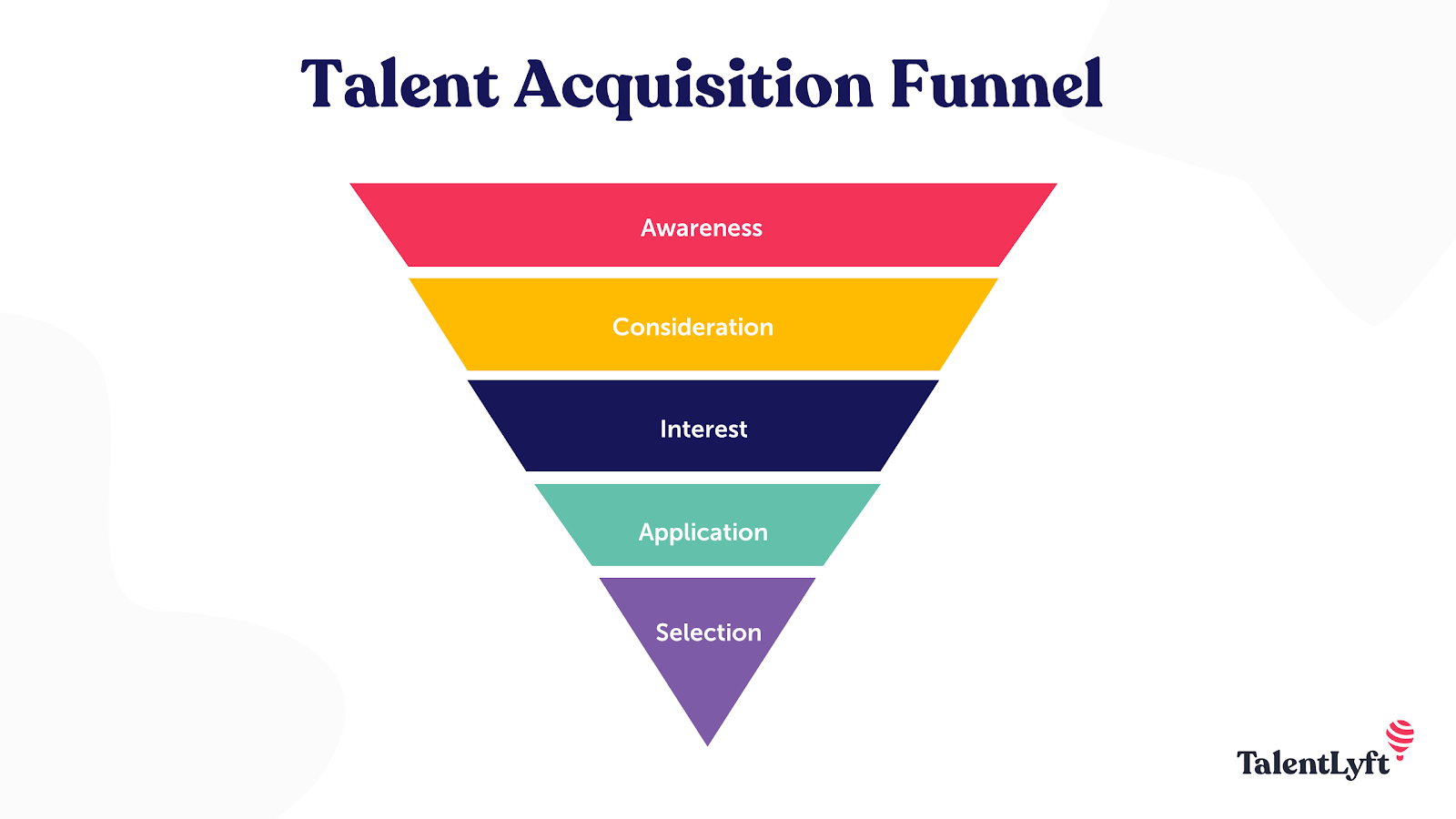
Recruitment is considered a complex process but in the end, it’s marketing only. If you want to convert the candidates, you need to ensure that your recruitment funnel is perfect.
The recruitment funnel helps you to simplify the recruitment process into various stages and break each stage into tasks. And the tough part is managing these multiple stages. But it can be made much easier by measuring recruitment metrics with the help of digital tools.
➡️ Download your FREE Checklist of Most Important Hiring Metrics & Tips for Improvement!
Going digital not only helps businesses to automate and streamline the hiring process but provides valuable data to businesses and recruiters. Reporting tools are a necessity but without properly tracking your recruitment funnel, your efforts become less efficient for the future.
You can track each stage of the funnel by using a recruitment funnel dashboard. It helps to streamline the whole process, sourcing the best possible candidates for the role. Hiring managers can use this data to monitor the recruiting efforts.
Below we will examine the essential recruitment metrics that are used by best recruitment teams.
Here is the list and explanation of the top 5 recruitment metrics every HR professional and recruiters should be tracking:
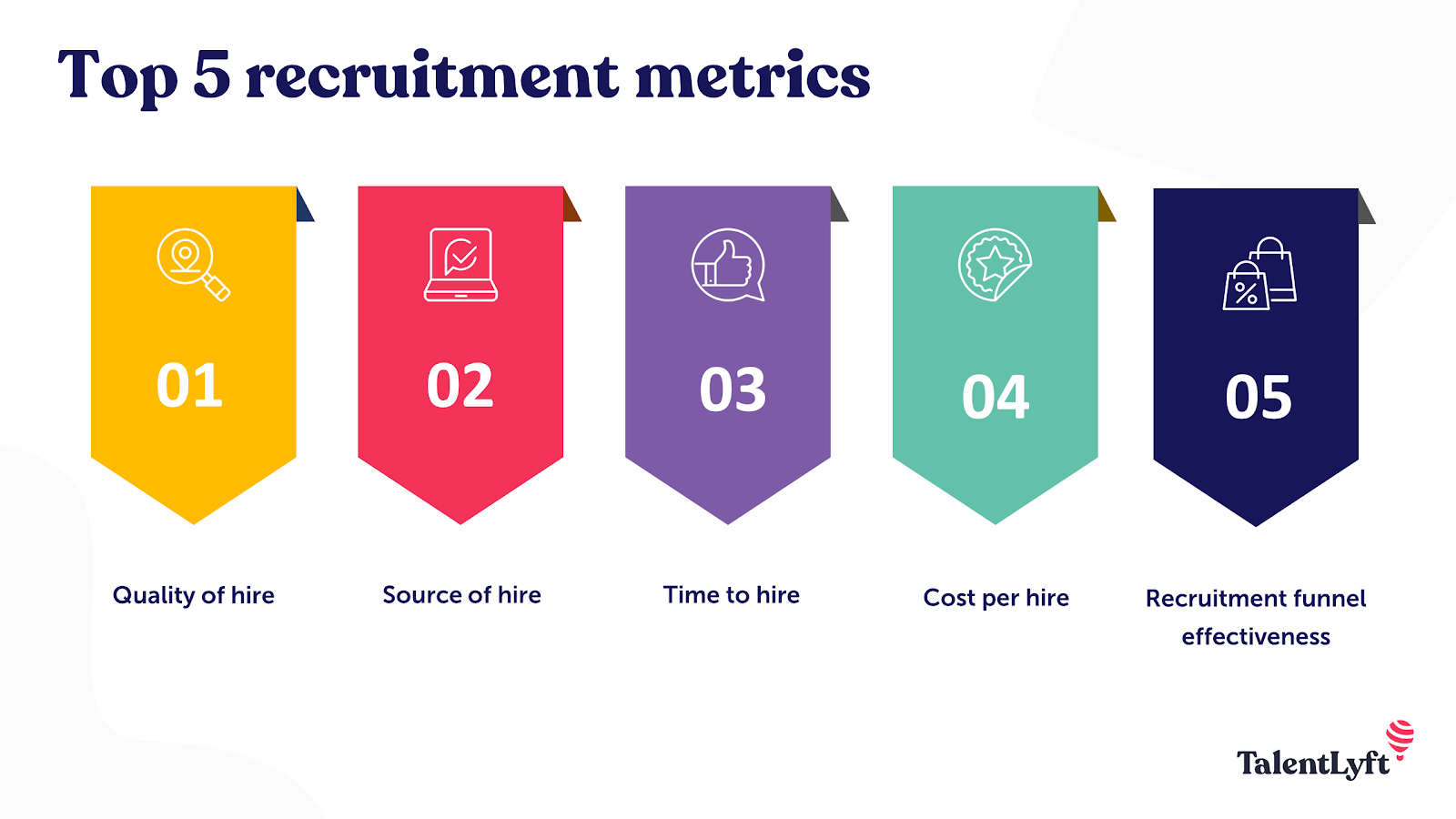
Quality of hire is one of the best metrics for hiring managers in terms of importance. Quality of hire has a long-term impact on the business. It also has an impact on the overall quality of the staff, it means improving your workforce by one hiring at a time.
This leads to better retention rates, more high quality hires means a better fit for a company. Let’s check it out by an example, the employees who have joined recently and have passed the stress-related during employment assessment performed better than other candidates.
This example shows how focusing on one element, ‘stress-resistance’ leads to a better quality of hire. In, short by selecting one different element, continually optimizing the selection process improves the quality of hire.
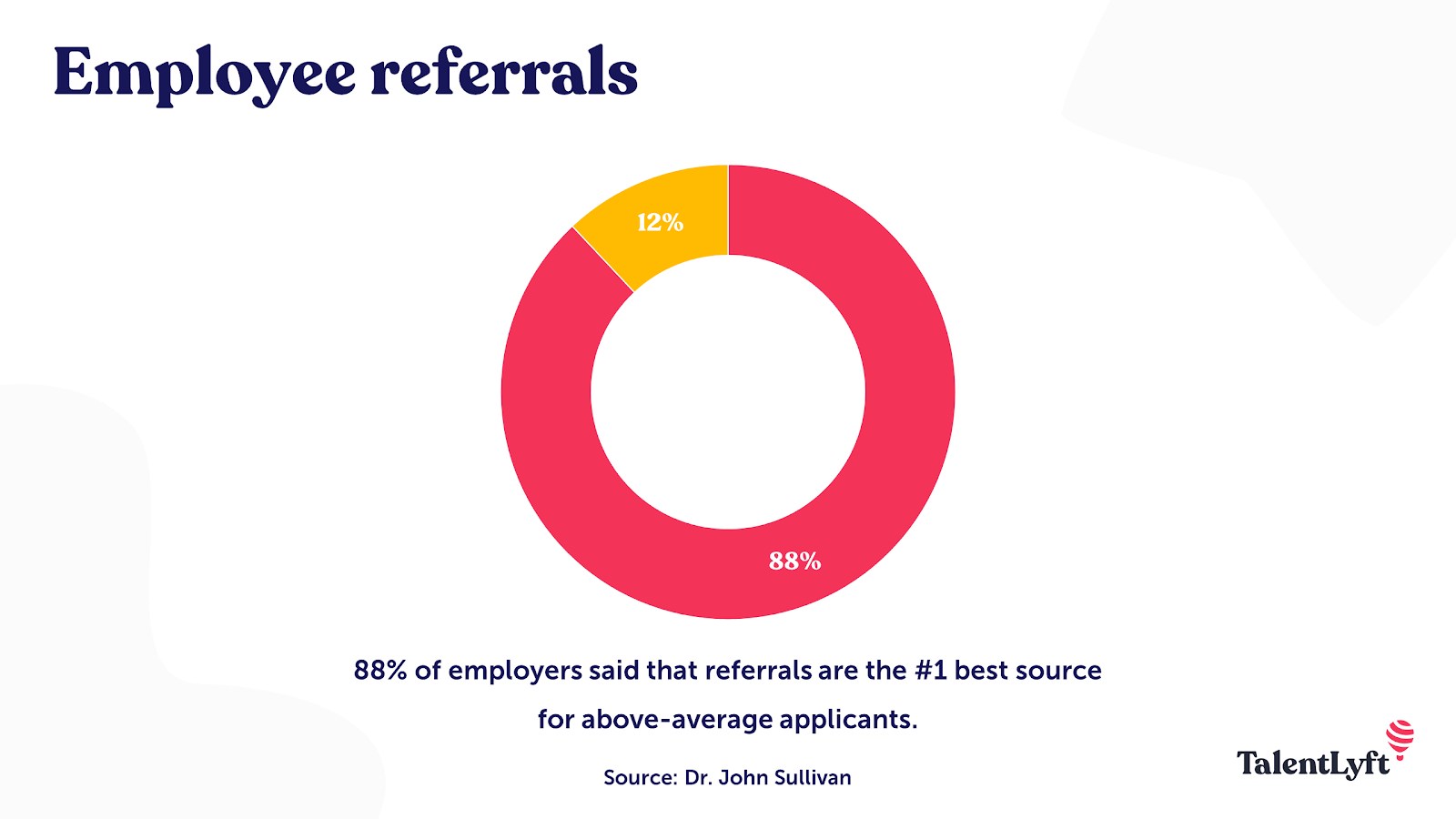
Where to look when hiring candidates for your company? The best talent acquisition companies use the source of hire as their metric. Candidates are taking the help of digital channels to search for the company.
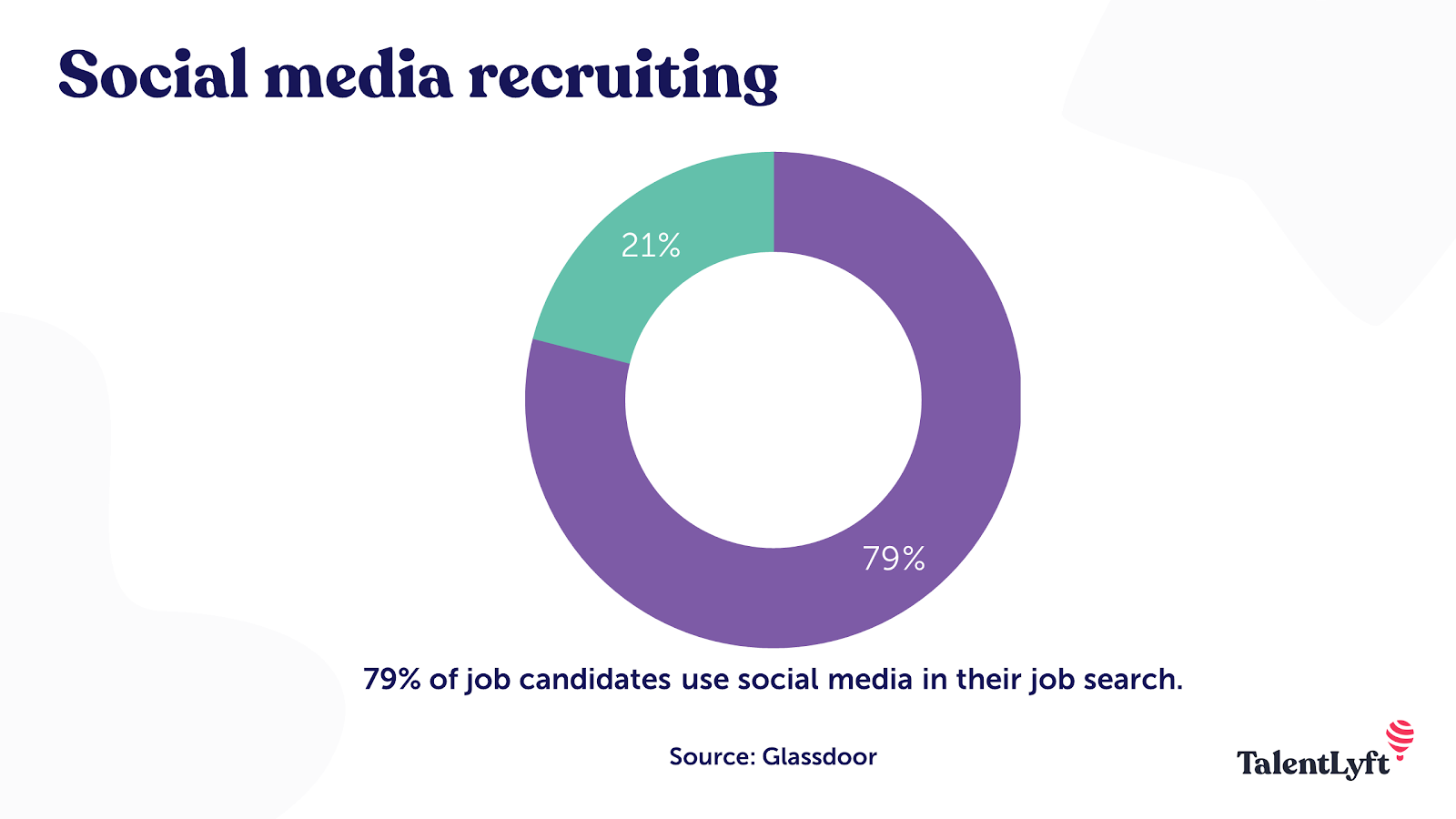
So, a dedicated recruiter also uses the same channels, be it LinkedIn, social networks or via advertisements. You can visualize the source of hire on the recruitment dashboard. It indicates information like the number of applicants that are arriving from the same source.
With this metric, you can understand the recruiting expenses and stop working on channels that are not bringing any candidates. This saves you money in the long run. You can spend money on channels that are bringing your company, qualified people.
Time to fill is another metric that provides stability in your organization. It tells the amount of time it would take to locate and hire any new employee. The process begins with the requisition getting approved by the company. It gives the manager the idea to understand the time it takes to fill the job position.
This step is important as hiring employees is a lengthy process involving various types. The successful companies take measures that reduce their ‘time to fill’, keeping a good quality of hire at the same time or its time wasted.
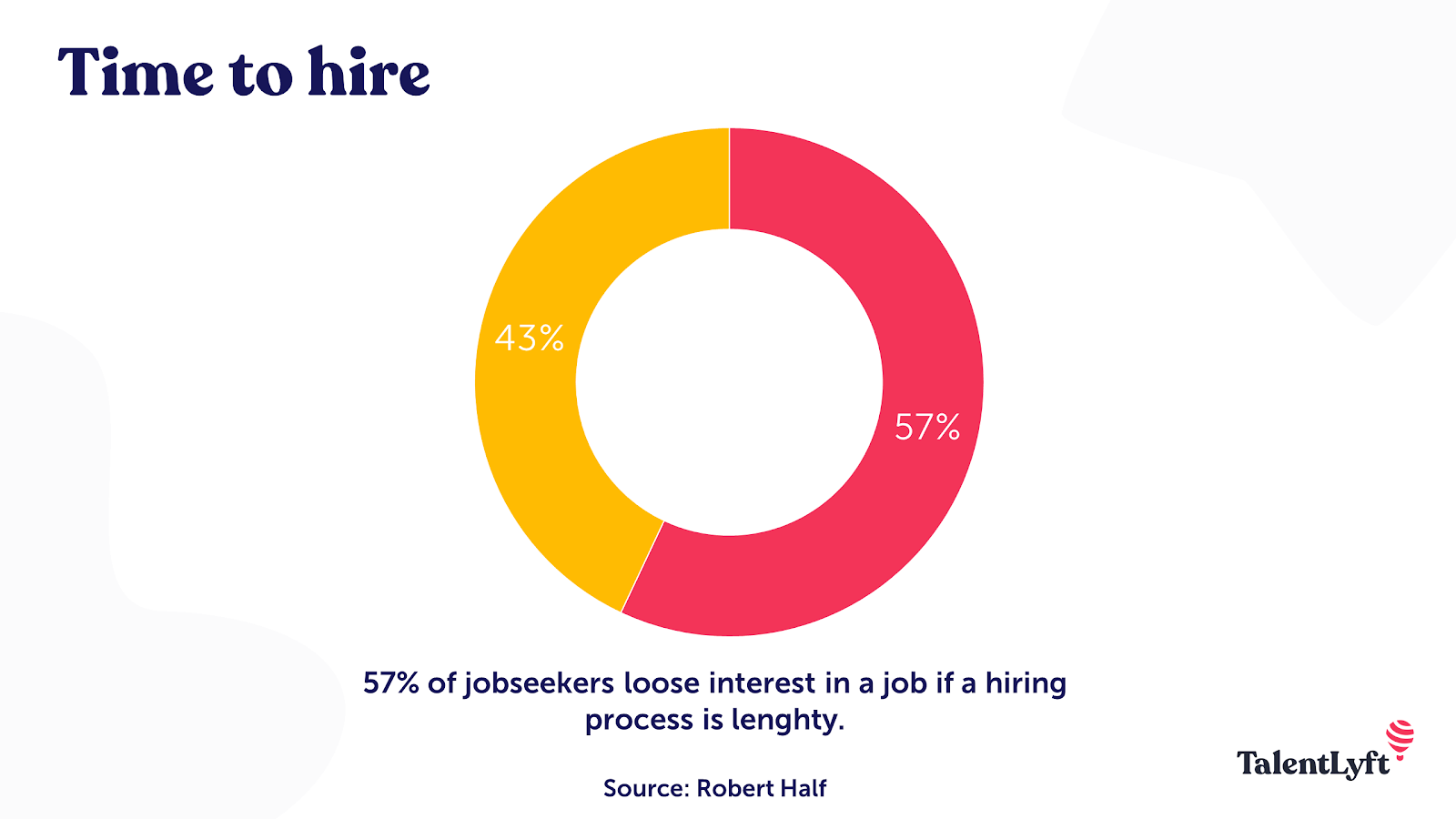
It takes up plenty of resources for successful candidates to go via recruitment funnel. Include advertisement costs, recruiter fees, social media accounts and LinkedIn.
The cost per hire metric explains companies how much it costs to hire new staff. It includes individual hires and the total number of new employees. Like time to hire, cost per hire gives a metric, gives a complete insight into the efficiency of the recruitment process. Keep all the information in one place which is easily accessible for everyone involved.
As the competition for every top talent increases, so does the recruitment spend:
According to Statista, the worldwide recruiting market was worth $148 billion in 2018.
The average cost per hire in 2019 was $4000.
Let’s see the recruitment funnel, this can be also used as the metric. You can analyze every step of your hiring process. With the technology in the HR sector booming, there are more candidate assessment methods present. These help to get a proper insight into the candidate. And recruitment funnel effectiveness KPI helps you measure this.
Pro tip: check for yield ratio per step. It’s a calculation based on the number of applicants who have cleared each stage of the funnel over the total number of applicants. By knowing this metric, you get to know where the refinement is needed for better recruitment.
Here is the list and explanation of the additional 5 recruitment metrics for ambitious HR professional and recruiters who wants to get deeper insights into their recruitment process:
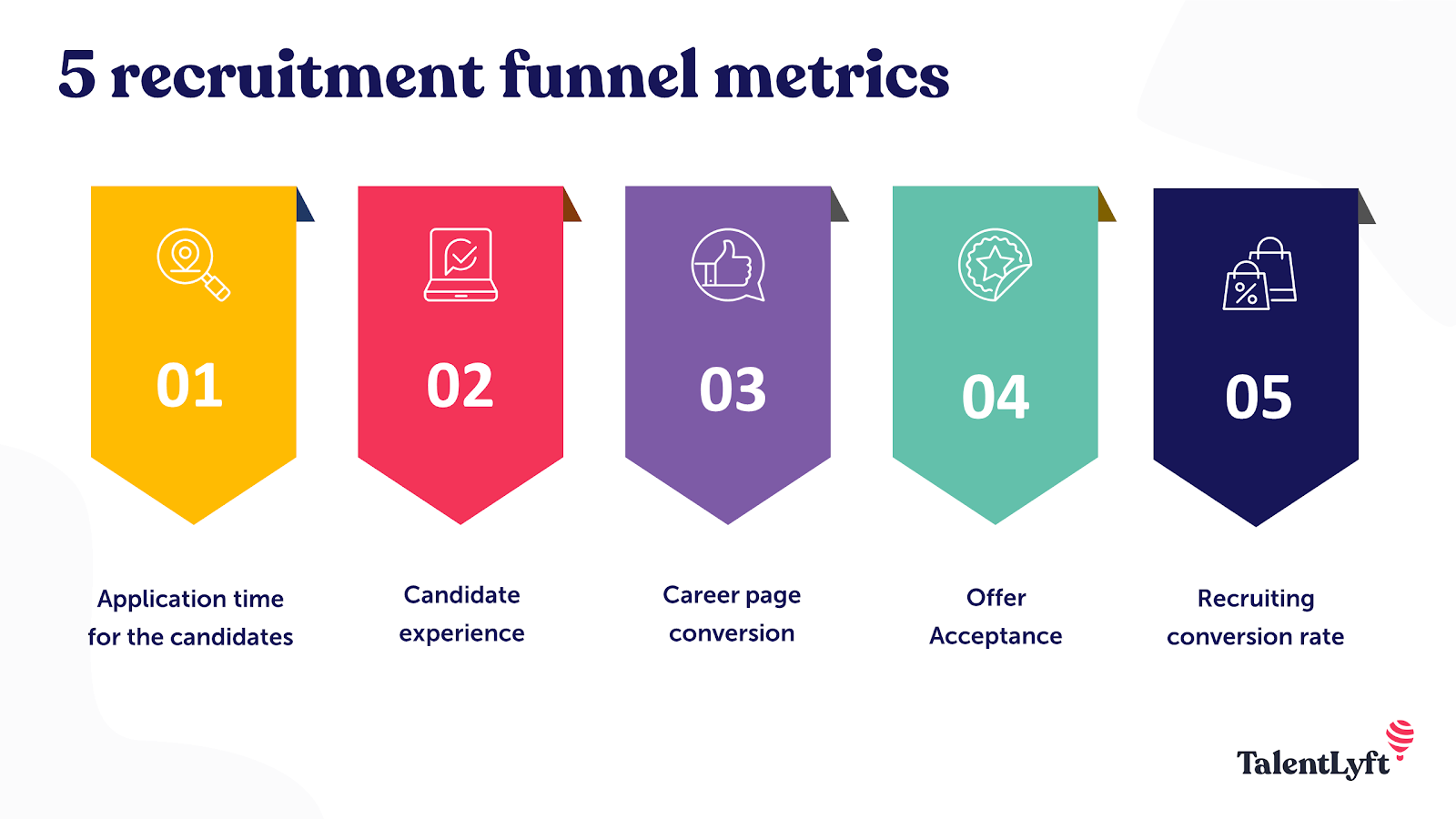
When it’s hard to fill the application form for the candidates, the drop rate is even bigger. It makes complete sense. Candidates apply to plenty of jobs at once and filling the same information time and time again can be tiresome. The employed candidates do not have much time to spend on application forms.
From my personal experience, it takes a lot of time. If you have never done it, you should try it yourselves to see how it goes. To guarantee that all your applicants finish the application on time, provide them with a quick and straightforward process. It should be focused on getting the information needed to assess if the candidate is qualified for the job. You can ask for more information later on.
This is the decisive part of the recruitment process, the candidate experience you provide can attract more candidates or take them away from the company. Measuring the applicant’s satisfaction level during the application process is crucial to know what steps you need to improve.
You can ask for the feedback at the end of the application process and in-between of the recruitment process. Keep a track of the rating and the feedback provided the candidates.
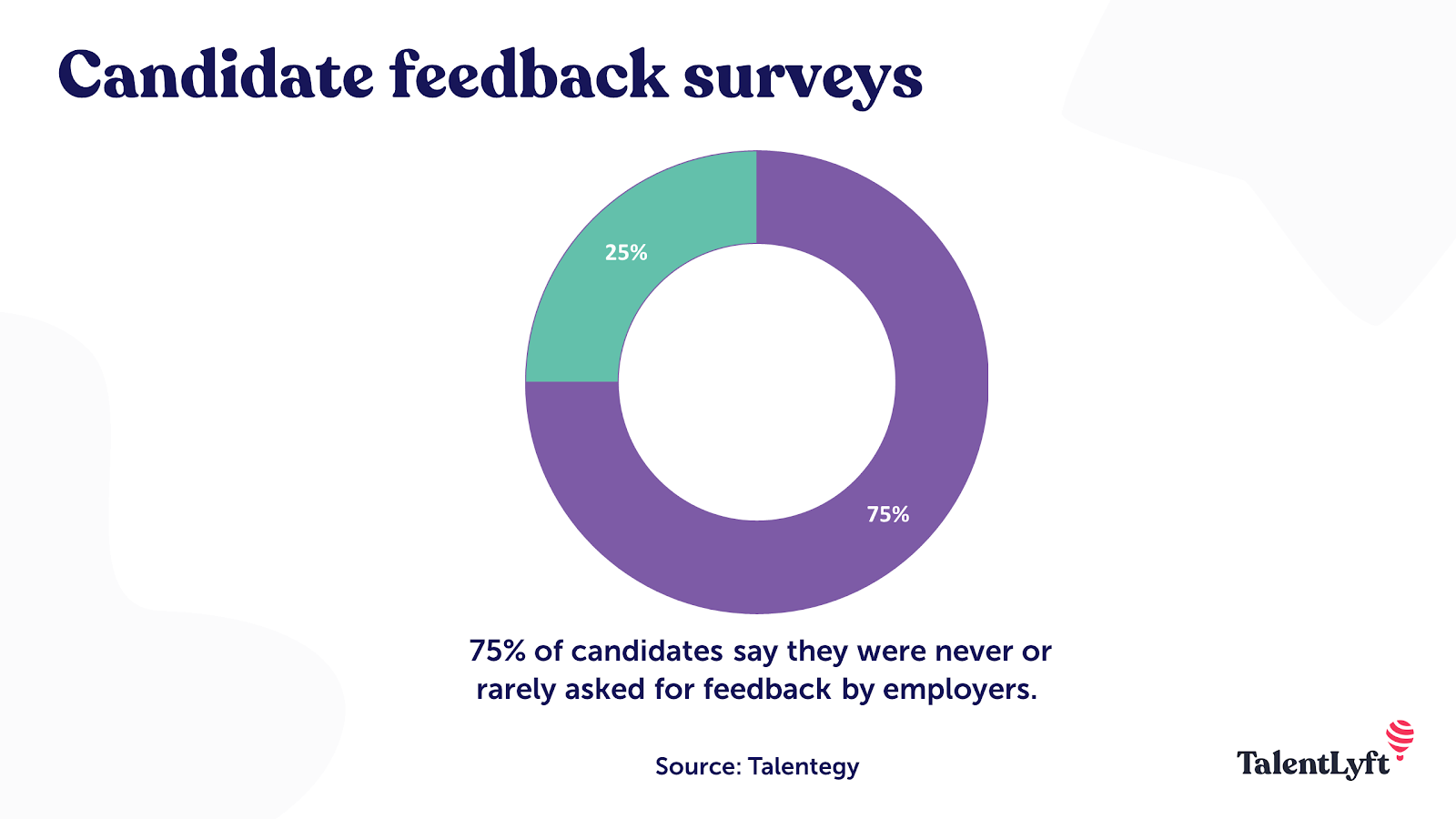
Having an appealing career page is key to attract candidates. But it’s not about the visitors, you want to get more applicants from your career site. How to know whether your current career page is working or not? Check the conversion rate. How many visitors apply for a job via your website?
This information you can get from your ATS. Looking at the careers page conversion rate, helps you to assess whether you need to improve any usability, add some videos, add job descriptions, add pictures and many more items.
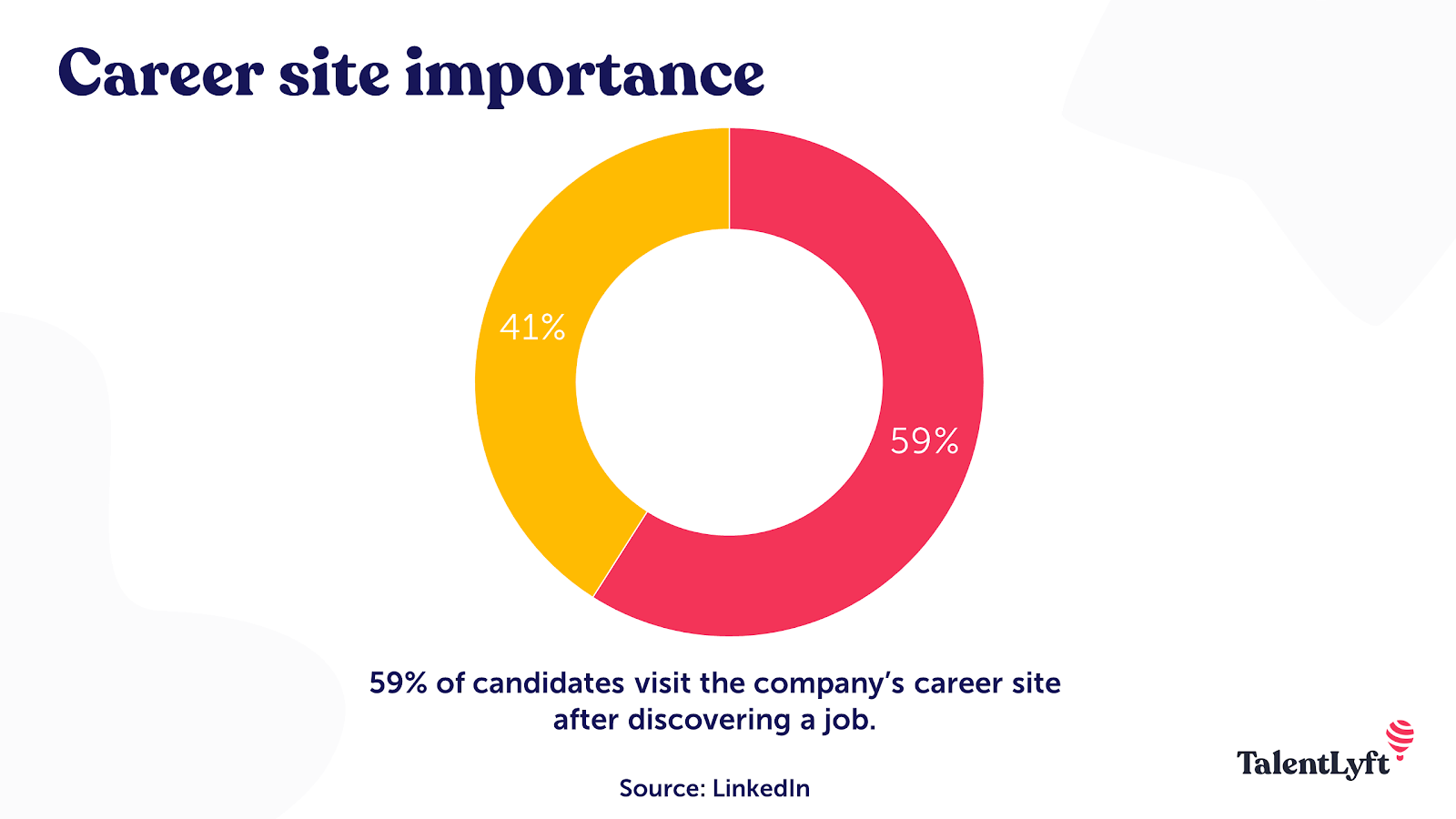
When the applicants make it to the end part of the recruitment funnel, it’s good news. But if they don’t accept the job offer, then it’s demoralizing. The acceptance rate metric shows the data of the candidates who have accepted the job offer. When the acceptance rate is low, it indicates that the recruitment funnel requires some tweaking.
A candidate might not be happy with the salary offered or they didn’t like the company culture. They got a job somewhere else or sometimes the candidate uses the job offer to get a pay raise from the current employer. These are some reasons for the low acceptance rate. You can work it out when you know the reason for your offer gets rejected. If you can’t match the salary, think of something else to offer them. Like free lunch, extra holidays, Esops, etc.
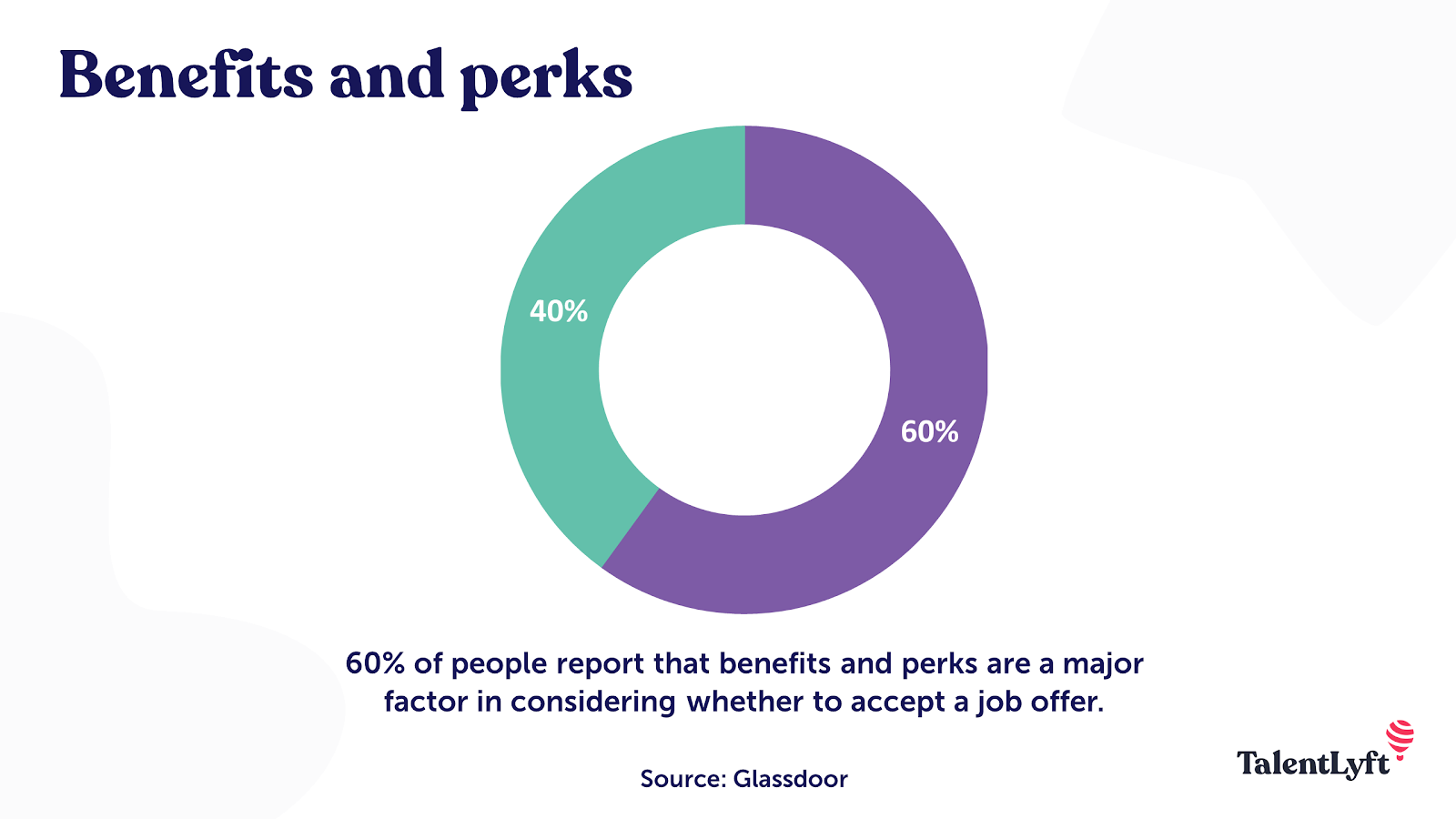
Conversions are an ideal metric to determine the success of the efforts in various areas and recruitment is not an exception. It helps to improve the performance of internal human resources and not only focus on just potential employees. The higher the conversion rate, the better.
By understanding the data you can modify your hiring strategy to attract top candidates or your business. Some of the key conversion rates to identify include:
% of interviews booked after the CV is sent
% of client interviews that result in the placement.
By considering the conversion rates, you can identify the challenges faced by your business and areas individual recruiters need to improve in.
It’s great to know that we can take the help of technology to recruit and hire candidates. Another advantage is to track and analyze performance. It makes the recruitment funnel an effective process.
The best thing about all the measuring? It provides the insight used to improve certain strategies. You will know what’s working for the recruitment process and what’s not.
You don’t want to measure everything, measure what’s important to your business goals. Measuring everything can be a bit overwhelming. Results are everything but only when you measure the right ones.
Ginni is a Talent Acquisition Expert with extensive experience in Tech and Non-tech hiring. She loves blogging and writing articles about Talent Acquisition and Human resources. She has been associated with the Talent Industry for a while and enjoys sharing her experience with others.
What is the Quality of Hire metric, and why is it crucial?
Quality of Hire assesses new hires' performance and impact, crucial for understanding how effective the hiring process is in bringing valuable employees to the company.
How does the Source of Hire metric benefit recruitment?
Source of Hire identifies the most effective recruitment channels, enabling companies to optimize their sourcing strategies and budget allocation.
What does the Time to Fill metric indicate?
Time to Fill measures the time taken from job requisition to acceptance, highlighting the efficiency of the recruitment process and potential bottlenecks.
Why is the Cost-per-hire metric significant?
Cost per Hire calculates the total cost involved in the hiring process, essential for budgeting and understanding the financial impact of the recruitment strategy.
How does the effectiveness of recruitment funnel metrics aid in recruitment?
This metric evaluates the success rate at each stage of the hiring process, helping to identify and improve areas where candidates may drop off.


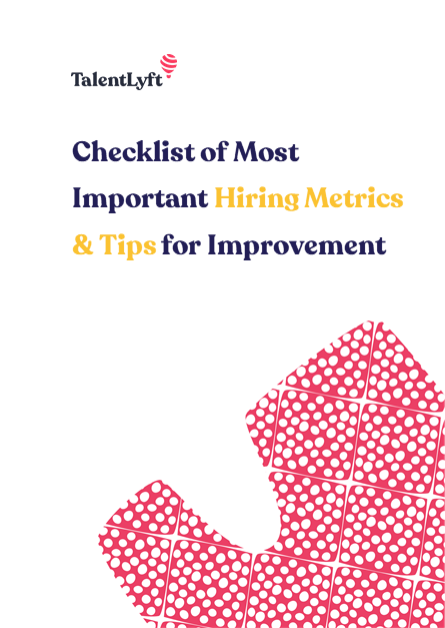


![Boolean Search for Recruiters [Actionable Guide]](https://adoptoprod.blob.core.windows.net/article/7wyu_xAg806Tm_lmFg71Rw.png)






